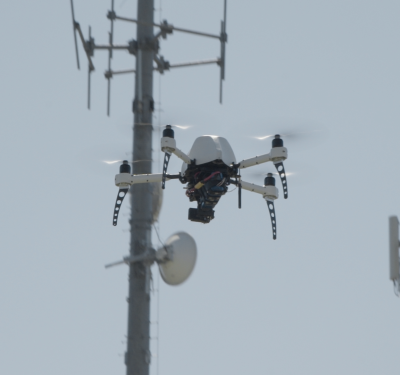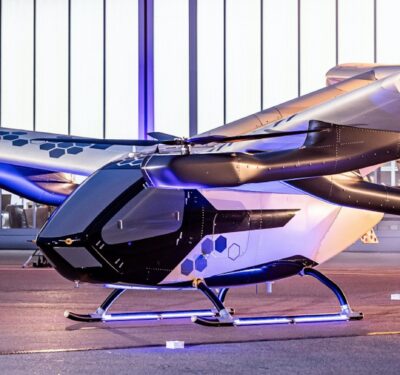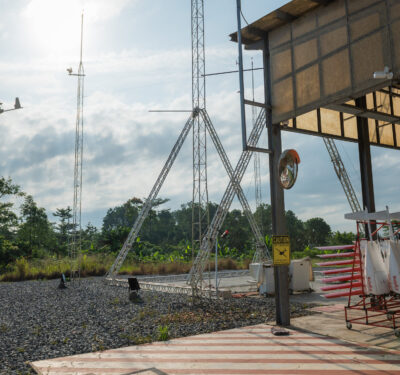
The committee charged with advising federal regulators on the emerging drone industry will focus on the best rules for unmanned flights beyond operators’ lines of sight, safety certifications for drones and drone pilots, whether and when federal rules should trump state or local regulations, and the security of drone software and hardware.
The Federal Aviation Administration’s Drone Advisory Committee gathered Friday for its inaugural meeting in a crowded auditorium at the Center for Strategic & International Studies in Washington. The fault lines among the 35 leaders of private industry, trade groups and government on the committee were apparent from nearly the beginning of the daylong session, but officials stressed that the goal of Friday’s meeting was to come up with a to-do list.
By the end of Friday’s meeting, members had agreed to form two “ad hoc” committees, one dedicated to questions of privacy and federal preemption, the other on “filling in the blanks” that will allow drone operators greater access to American airspace. The idea is to find further questions that can be tackled by subcommittees — questions that will lead, ultimately, to concrete proposals that will help federal officials strike the right regulatory balance between innovation and safety.
Nearly 13,000 waiver applications have flooded the FAA since the agency’s new Part 107 rules took effect Aug. 29, officials said at Friday’s meeting, and the FAA is expected to wrap up a rulemaking in December, governing unmanned flights over people.
Yet the committee’s members were divided about whether regulators are moving too slowly in getting a handle on the drone industry, according to the results of an internal, committee survey made public during Friday’s meeting.
That might be okay, too, FAA Administrator Michael Huerta told the group.
“We hear from pilots all the time” about the potential dangers of drones in America’s airspace, he said. “We also hear from those of you who say, ‘You’re holding us back.’”
“We intentionally brought these distinct cultures together, and I’m not going to spend any time trying to convince you to change your mind. But what I’m asking you to do is to consider that you have very distinct viewpoints, and balance those viewpoints.
“A safety culture is by definition a cautious culture, because no one wants to screw up that safety record,” Huerta said. “The culture of drones, though, is an innovation culture. What we want to use the advisory committee to do is to have a public forum where these issues can be debated, they can be discussed and play a significant role in this societal evolution of what do we, as a country, want.”
It’s essential, Huerta said, that the committee come up with concrete guidance for regulators — and soon.
“The FAA cannot afford to move at the speed of government while the industry is moving at the speed of Silicon Valley,” he said.
Some concerns had already been raised about the advisory committee’s roster before Friday’s meeting. The Commercial Drone Alliance says it’s worried that the committee isn’t diverse enough — that, for instance, several defense contractors have been included while third-party drone service providers have been left out.
Still, there were divisions aplenty in the room Friday. Committee members canvassed matters such as privacy, safety certification, emerging software and hardware, interoperability and autonomous operating.
San Francisco Mayor Ed Lee, for instance, urged committee members to take public concerns over the invasions of privacy seriously, but added that few local officials are excited about the idea of the FAA preempting local rules with broad federal regulations. “Maybe we have a different sense of privacy because we define freedom differently in our community,” he said, adding that the issue was driven home forcefully earlier this year when a drone—camera whirring—crash-landed onto the balcony of his third-floor mayoral office.
But Brendan Schulman, vice president of policy for DJI, said the last year has seen the states deal with some 280 different drone bills. “I’m very amenable to working with everyone and trying to come up with solutions that work,” he said. “My concern is the chaos that results when so many entities are trying to legislate.”
State legislatures may not be the only chaotic venues. Jenny Solomon, the FAA’s assistant administrator, reminded committee officials that the group excluded “important stakeholders: the 535 members of Congress,” who’ve continued to add new regulatory priorities to the agency’s brief but who have only authorized agency funding through fiscal 2017 and have struggled repeatedly with FAA funding measures.
Robert Isom, the executive vice president and chief operating officer at American Airlines, raised the specter of Congress later in Friday’s meeting. He urged the committee members — especially those start-up companies who were “still building business models” — to remember, “airspace isn’t free.”
A huge part of commercial, passenger airlines’ prices result from FAA compliance, Isom said. Further cuts to the agency are only likely to increase costs for everyone—including newly emerging commercial drone companies, he said.
“If funding isn’t approved for the FAA, and we get in another situation like sequestration, I guarantee you that the things that are cut won’t be under our control,” Isom said.
Any work done by the committee “has to be done with the understanding, ultimately, of the price tag that’s involved,” he added.
The committee is required to have three public meetings per year. Its next session has been tentatively scheduled for Jan. 4, in Las Vegas.






